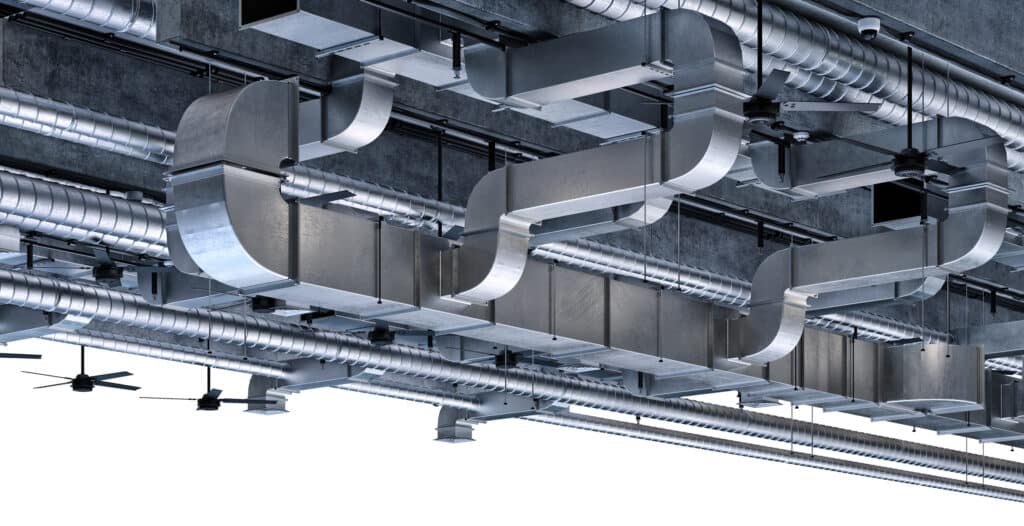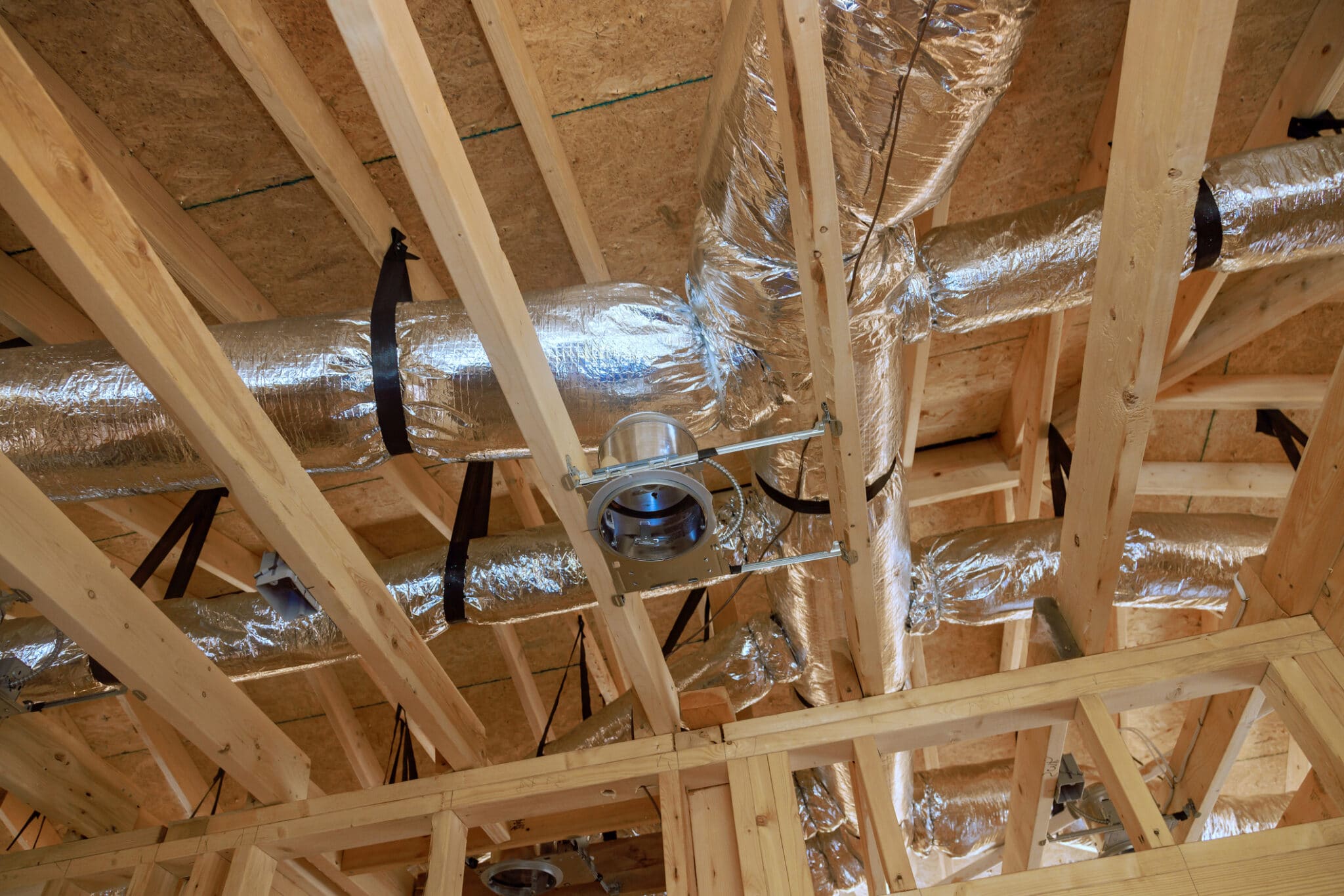
Ductwork Design Considerations for New Homes in Saginaw, TX
When building a new home in Saginaw, TX, one of the most critical components to consider is the ductwork design. This aspect of construction is pivotal in ensuring that your heating, ventilation, and air conditioning (HVAC) system operates efficiently and effectively. Properly designed ductwork not only optimizes energy usage but also enhances the overall comfort of your home. As such, incorporating a thoughtful ductwork design from the outset can lead to significant benefits, including improved air quality and reduced energy costs.
In regions like Saginaw, where temperatures can vary significantly, the importance of a well-planned HVAC system cannot be overstated. The layout of ducts affects how evenly and quickly heated or cooled air is distributed throughout the house. Therefore, it’s essential to work with HVAC professionals who understand the local climate and can tailor the ductwork design to meet specific environmental demands. This ensures that every room in your home maintains a comfortable temperature year-round.
For homeowners in nearby Southlake, TX, and surrounding areas, the principles of efficient ductwork design remain consistent. It’s about creating a system that works seamlessly with your home’s architecture and your lifestyle needs. Whether you’re in a sprawling estate or a compact single-story home, the ductwork should facilitate smooth and efficient air flow. Consulting with experienced professionals who specialize in ductwork design will provide you with a system that supports optimal HVAC performance.
As we delve deeper into the specifics of ductwork design, remember that each decision should be made with precision and care. From choosing the right materials to determining the ideal layout, every element plays a crucial role in the system’s overall functionality. In the following sections, we’ll explore how to achieve an efficient ductwork setup that suits the unique characteristics of new homes in Saginaw and the broader Texas area. This foundational knowledge will help ensure that your home is comfortable, energy-efficient, and well-suited to the local climate.
Understanding the Basics of Ductwork Design
Understanding the basics of ductwork design is crucial for homeowners in Saginaw, TX, who are building new homes. The design of your ductwork system impacts the efficiency with which air is circulated throughout your home, affecting both comfort and utility bills. A well-planned ductwork layout ensures that air reaches every corner of your home uniformly and efficiently. It is essential to grasp the fundamental principles that govern effective ductwork to make informed decisions during the construction process.
The first step in ductwork design is determining the correct size and layout of the ducts. This involves calculating the air flow requirements based on the size of the house and the capacity of the HVAC system. Incorrect sizing can lead to inefficiencies such as uneven heating or cooling, excessive noise, and increased energy consumption. Professionals use specific software and manual calculations to ensure that the ductwork is perfectly tailored to your home’s needs.
Material selection is another critical factor in ductwork design. The most common materials used are sheet metal, fiberglass, and flexible ducting, each with its own set of advantages and disadvantages. Sheet metal is durable and less prone to mold and pests, while fiberglass can provide better sound insulation and energy efficiency. Flexible ducting, on the other hand, is easier to install in challenging spaces. The choice of material can significantly influence the longevity and effectiveness of your HVAC system.
Lastly, proper insulation is paramount, especially in areas like Southlake, TX, where temperatures can vary widely. Insulating ductwork helps maintain the temperature of the air as it travels through the system, reducing energy loss and preventing condensation. Well-insulated ducts are essential for minimizing energy costs and enhancing overall system performance. By understanding these basic principles of ductwork design, homeowners can ensure their HVAC system operates at peak efficiency.
Climate Considerations for Ductwork in Saginaw, TX
When considering ductwork design for new homes in Saginaw, TX, it’s crucial to account for the local climate’s unique challenges. Saginaw experiences a range of weather conditions, from hot summers to chilly winters, making climate adaptability a key factor in ductwork planning. A well-designed duct system ensures that temperature control is efficient regardless of external weather conditions, enhancing comfort and reducing strain on the HVAC system.
To tackle the varied climate in Saginaw, ductwork should be robust enough to handle significant temperature differences throughout the year. This involves selecting materials and insulation that can withstand these fluctuations without compromising air quality or efficiency. For instance, using insulated ducts can prevent heat loss during the winter and keep cool air from warming up during the summer, thus maintaining optimal air flow and temperature control.
Moreover, the positioning of ducts plays a pivotal role in maximizing HVAC efficiency in fluctuating climates. Strategic ductwork layout ensures that no area of the home is over or under-served by the heating and cooling system. This balanced distribution is essential for preventing hot or cold spots in different areas of the house, which can be a common issue in poorly designed duct systems.
Lastly, while Saginaw homeowners need to focus on these climate-specific considerations, the principles of effective ductwork design also apply to nearby areas like Southlake, TX. Regardless of the location, ensuring that the ductwork is tailored to the local climate conditions will contribute significantly to the overall energy efficiency and comfort of the home. By integrating these considerations, homeowners can enjoy a more consistent and comfortable indoor environment throughout the year.
Sizing and Layout: Key Factors for Efficiency
The sizing and layout of ductwork are paramount in achieving optimal efficiency in new homes in Saginaw, TX. Properly sizing the ducts ensures that the HVAC system does not work harder than necessary, which can lead to energy waste and increased wear on the system. The layout, or the way ducts are routed through the home, directly impacts how effectively air is distributed. Both of these factors are crucial in creating a comfortable home environment and should be carefully planned during the ductwork design phase.
When determining the correct size for ductwork, HVAC professionals consider several factors including the square footage of the home, the volume of air the HVAC system can handle, and the specific heating and cooling requirements for each zone within the house. Oversized ducts can result in poor air velocity, while undersized ducts can cause excessive noise and strain on the HVAC system, leading to premature failure. A precise balance is essential for maintaining system efficiency and longevity.
The layout of the ductwork should ensure that air is delivered efficiently to all parts of the home. This involves strategic placement of supply and return vents to facilitate optimal air flow and temperature control. In areas like Southlake, TX, where architecture can vary significantly, the ductwork layout must be customized to address the unique characteristics of each home. This customization ensures that air reaches every corner of the house, avoiding hot or cold spots that can occur with a less thoughtful design.
In conclusion, the sizing and layout of ductwork are critical components of ductwork design that significantly influence the efficiency of HVAC systems in new homes. By focusing on these aspects, homeowners in Saginaw can ensure their systems are not only efficient but also contribute to the overall comfort and energy management of their homes. Properly implemented, these elements of ductwork design safeguard against common issues and pave the way for a sustainable and comfortable living environment.
Material Choices for Ductwork in New Homes
Choosing the right materials for ductwork in new homes is crucial for ensuring long-term durability and efficiency. In Saginaw, TX, where environmental conditions can vary widely, selecting materials that can withstand these fluctuations is essential. Metal ducts, typically made from galvanized steel or aluminum, are popular due to their durability and resistance to mold and pests. These materials are excellent for maintaining air quality and preventing leaks, which can significantly impact the efficiency of the HVAC system.
However, for those seeking enhanced noise reduction and thermal retention, fiberglass-lined ducts or fiberboard ducts are viable options. Fiberglass lining inside metal ducts can reduce the sound of air moving through the system, making it a quieter option for residential areas. Fiberboard ducts, composed of compressed resin-bonded fiberglass, offer excellent thermal insulation properties. This material helps maintain the temperature of the air as it travels through the ducts, reducing energy loss.
Flexible ducting is another option that might suit homes in Southlake, TX, where unusual or tight spaces could make traditional metal ductwork impractical. Made from a wire coil covered with a bendable, durable plastic, and surrounded by insulation, flexible ducts are easy to install. They can be routed around obstacles without requiring multiple joints or fittings, which minimizes the chances of leaks.
Ultimately, the choice of ductwork material will impact not only the air quality and energy efficiency of a home but also the long-term maintenance and functionality of the HVAC system. Homeowners should consult with HVAC professionals to determine the best material suited to their specific needs and local climate conditions. This ensures that the ductwork design contributes effectively to the overall comfort and efficiency of their new home.

Energy Efficiency and Insulation Techniques
Energy efficiency is a cornerstone of effective ductwork design, especially in new homes in Saginaw, TX. Proper insulation techniques play a crucial role in maintaining the efficiency of an HVAC system. By ensuring that ductwork is well-insulated, homeowners can prevent energy loss and keep utility bills to a minimum. This is particularly important in regions with extreme temperatures, as insulation helps stabilize indoor environments regardless of outdoor conditions.
One popular method of enhancing ductwork insulation is the use of reflective insulation materials. These materials reflect heat rather than absorbing it, which is ideal for keeping cool air inside during the hot summer months and warm air during the cold winters. Reflective insulation is often used in attics and crawl spaces where ductwork is commonly installed. This approach not only improves energy efficiency but also extends the lifespan of the HVAC system by reducing the thermal stress on its components.
Another effective technique is duct sealing all joints and connections within the ductwork system. Leaks in ductwork can lead to significant energy losses, as conditioned air escapes before reaching its intended destination. Using mastic sealant or metal-backed tape can ensure that joints are airtight, which enhances overall system efficiency. This is a critical step that should not be overlooked during the installation process in both Saginaw and Southlake, TX homes.
Lastly, considering the installation of insulated duct sleeves for ducts that pass through unconditioned spaces can further optimize energy efficiency. These sleeves act as an additional barrier against temperature changes, ensuring that air maintains its temperature as it travels through the duct system. By implementing these insulation techniques, homeowners can achieve a more energy-efficient home, contributing to both environmental conservation and reduced operational costs.
Balancing Cost and Quality in Ductwork Installation
Balancing cost and quality in ductwork installation is a crucial aspect of building new homes in Saginaw, TX. Homeowners must navigate between investing in high-quality materials and managing their overall construction budget. The key is to find a middle ground that does not compromise the ductwork design’s efficiency or durability. By selecting the right materials and installation practices, you can ensure that the ductwork system supports the home’s HVAC requirements effectively.
It’s important to consider the long-term benefits of choosing quality over the lowest upfront cost. High-quality ductwork materials and professional installation may have a higher initial price, but they can lead to significant savings in maintenance and energy costs. For instance, well-installed, durable ducts require fewer repairs and are less likely to develop leaks, which can increase the efficiency of the HVAC system. This approach not only saves money in the long run but also enhances the comfort of your home.
In areas like Southlake, TX, where architectural styles and home sizes can vary greatly, customized ductwork installation is essential. This customization ensures that the ductwork is perfectly adapted to each unique space, which can prevent common issues such as uneven heating or cooling. Working with skilled professionals who can tailor the ductwork design to specific home layouts and sizes is crucial for achieving optimal performance from the HVAC system.
Ultimately, homeowners should view ductwork installation as an investment in their property’s value and their own comfort. By prioritizing quality and working with experienced HVAC professionals, you can create a balanced approach that meets both your budgetary and functional needs. Remember, effective ductwork design is fundamental to maintaining an efficient, comfortable, and energy-efficient home in the fluctuating climates of Texas.
Common Mistakes to Avoid in Ductwork Design
Avoiding common mistakes in ductwork design is crucial for homeowners in Saginaw, TX, aiming to optimize their HVAC systems. One frequent error is neglecting proper sizing and layout of ducts, which can severely impact system efficiency. Oversized or undersized ductwork can lead to poor air distribution and increased energy consumption, making it essential to rely on precise calculations and professional expertise during the design phase.
Another pitfall is the choice of inferior materials, which can compromise the longevity and performance of the ductwork. While it might be tempting to opt for cheaper materials to cut costs, this can lead to issues like air leaks and degradation over time. In Saginaw, where climate conditions can fluctuate, it’s particularly important to choose durable materials that can withstand environmental stresses.
Improper insulation is also a common oversight that can lead to significant energy losses. Effective insulation is vital to maintain the air temperature as it moves through the ducts, especially in areas prone to extreme temperatures like Southlake, TX. Without adequate insulation, ductwork can lose a substantial amount of conditioned air, increasing utility bills and straining the HVAC system.
Lastly, failing to seal ductwork joints properly can lead to air leaks, which are a major contributor to inefficiency in HVAC systems. Ensuring that all connections are sealed with high-quality methods like mastic sealant or metal-backed tape is essential. This step prevents conditioned air from escaping, thereby enhancing the overall efficiency and effectiveness of the ductwork design. By avoiding these common mistakes, homeowners can ensure their HVAC system is both efficient and robust.

The Role of Professional HVAC Contractors
The role of professional HVAC contractors is indispensable in the process of ductwork design, especially for new homes in Saginaw, TX. These experts bring a wealth of knowledge and experience that is crucial for ensuring the HVAC system is not only efficient but also tailored to the specific needs of the home. Professional contractors understand the intricacies of ductwork design, from the initial planning and sizing to the final installation and testing. Their expertise ensures that the ductwork is optimized for both performance and longevity.
Choosing the right HVAC contractor can significantly impact the success of your ductwork design. It’s essential to work with professionals who are well-versed in the latest industry standards and who have a proven track record in the field. These contractors will use advanced tools and techniques to calculate the precise requirements for your home’s ductwork. This precision helps prevent common issues such as uneven heating or cooling, which can affect the comfort of residents in Southlake, TX, and similar areas.
Moreover, professional HVAC contractors are crucial in advising homeowners on the best materials and configurations for their specific climate and home layout. They can offer valuable insights into the most efficient and cost-effective materials to use, which can withstand local environmental conditions without degrading. Their guidance is vital in making informed decisions that balance cost, efficiency, and durability in ductwork design.
Finally, the involvement of professional HVAC contractors ensures compliance with local building codes and regulations. This compliance is not only important for safety and efficiency but also for maintaining the value of your property. By entrusting your ductwork design to certified professionals, you ensure that all aspects of the installation are up to standard, providing peace of mind and a guarantee of quality workmanship. This professional oversight is key to achieving a reliable and effective HVAC system that enhances the comfort and efficiency of your new home.
Frequently Asked Questions
What are the key ductwork design considerations for new homes in Saginaw, TX?
When planning ductwork design for new homes in Saginaw, TX, several key considerations must be addressed to ensure optimal HVAC efficiency. Firstly, the layout should facilitate smooth and balanced airflow throughout the home, which can significantly reduce energy consumption. It’s also crucial to select the right size and type of ducts to maintain consistent temperatures in all rooms. Additionally, proper insulation of the ductwork is essential to prevent heat loss and gain, particularly given the varying temperatures experienced in Texas. By focusing on these aspects, homeowners can enhance comfort and maximize the efficiency of their HVAC systems.
How does climate in Saginaw, TX impact ductwork design?
The climate in Saginaw, TX, plays a pivotal role in ductwork design, influencing both materials and configuration. Due to the region’s hot summers and mild winters, ductwork must be designed to handle significant temperature differences, preventing energy loss. Proper insulation is crucial to maintain indoor temperatures and reduce the workload on HVAC systems. Additionally, the choice of duct material can affect durability and efficiency, with some materials better suited to withstand the area’s humidity and heat. By considering these climate-related factors, ductwork design can be optimized for performance and longevity.
What are the most common ductwork materials recommended for new homes in Saginaw?
In Saginaw, TX, the most recommended ductwork materials for new homes typically include sheet metal, fiberglass duct board, and flexible duct. Sheet metal is highly durable and offers a robust framework resistant to mold and pests, making it a popular choice for long-term efficiency. Fiberglass duct board is favored for its excellent thermal insulation properties, which help maintain consistent indoor temperatures. Flexible ducts, known for their versatility, are ideal for challenging spaces where traditional ducts might not fit. Selecting the right ductwork material is crucial for maximizing the effectiveness and longevity of HVAC systems in new constructions.
What are the benefits of proper ductwork design in new homes?
Proper ductwork design in new homes offers numerous benefits, enhancing overall comfort and system efficiency. Well-planned ductwork ensures that air is distributed evenly throughout the house, eliminating hot or cold spots and promoting a consistent indoor climate. This efficiency not only improves the living environment but also reduces the strain on the HVAC system, potentially extending its lifespan. Furthermore, effective ductwork design can lead to significant energy savings by minimizing air leakage and optimizing airflow, making it a crucial aspect of building new homes in Saginaw, TX.
How can ductwork design improve energy efficiency in Saginaw homes?
Ductwork design plays a crucial role in enhancing energy efficiency in Saginaw homes by optimizing airflow and reducing energy waste. Properly designed ducts ensure that air travels efficiently throughout the home, minimizing the energy required to maintain desired temperatures. Strategic placement and sealing of ductwork prevent leaks and drafts, which are common issues that lead to higher energy consumption. By focusing on these elements of ductwork design, homeowners in Saginaw can significantly improve the energy efficiency of their HVAC systems, leading to lower utility bills and a more comfortable living environment.


